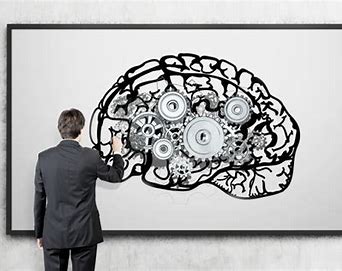
A Creative Approach to Problem-Solving

Being a remote working girly for almost three years now, I sometimes find collaboration (especially when multiple stakeholders are involved) impossible.
Aligning via chat can be tough, and email can send the tone of “Did she just say THAT?” when deadlines are pressed (my PR friends KNOW that feeling). Emails get deleted, and another meeting about a meeting via Zoom? Someone, please tell me it’s 5 o’clock somewhere (I say as I check my watch, and it is 8 a.m. on a Sunday).
When do the deliverables land on your desk, or does the task get executed? The thoughts of “I should have just done this myself” might begin to dance around, but then you may question, “Was I not clear?”
Neuroscience has shown that prolonged screen time can negatively impact our cognitive abilities, including executive function. Additionally, virtual collaboration with low engagement can compromise effective communication and hinder the development of strong social bonds, which are crucial for successful teamwork.
Article to back it up so that nobody tries to cancel me: How Does Zoom Affect Your Brain? Neuroscience Now Has Answers
Here are my top two reasons why incorporating a whiteboard into your next Zoom or strategic meeting can help you reach your team’s goals.
Whiteboarding is a Form of Tactical Feedback
Have you ever had a brilliant idea strike you during a walk or shower? These activities often lead to creative breakthroughs because they provide a period of focused, uninterrupted thinking. This allows your brain to enter a state of flow, where it can be more productive. This process is also called tactical feedback.
From a Neuroscience perspective: Tactical feedback is a targeted approach that increases learning potential by directly engaging the brain’s neural pathways
Whiteboarding offers real-time feedback as ideas are visualized and discussed. This immediate interaction and visual representation stimulate critical thinking, problem-solving, and creative processes, making it a powerful tool for learning and solving complex problems.
Whiteboarding Utilizes Your Whole Brain
Whiteboarding allows you to engage multiple areas of the brain, stimulating both creative and analytical thinking. *Proud Nerd Screaming Internally* Here’s how it works (from a super high level because I know y’all did not sign up for a learning and memory course from me).
1. Visual-Spatial Processing:
- Right Brain Dominance: This hemisphere is responsible for spatial reasoning, pattern recognition, and visual processing.
- Visualizing Ideas: Whiteboarding allows us to visually represent ideas, concepts, and problems, activating this part of the brain.
- Enhanced Memory: Visual information is more easily remembered than verbal information, making whiteboarding an effective tool for learning and retention.
2. Analytical Thinking:
- Left Brain Dominance: This hemisphere is associated with logical reasoning, language, and sequential processing.
- Breaking Down Problems: Whiteboarding helps us break down complex problems into smaller, more manageable steps, engaging analytical thinking.
- Problem-Solving: By visualizing and manipulating information on the whiteboard, we can identify patterns, relationships, and potential solutions.
Leveraging both sides of the brain enhances learning and problem-solving abilities- without using yet another SaaS product (I know, shocking).
When you use this holistic approach, don’t be surprised when it leads to faster, more accurate solutions. Just don’t forget the A/B test 😉
So what are you waiting for? Skip the Gong call review and grab your whiteboard- your cognitive processing will thank you ;).

































@Cortney W., you are spot on with every point you made in this article. This approach definitely works & I have had leading results with this approach, which is the best approach.